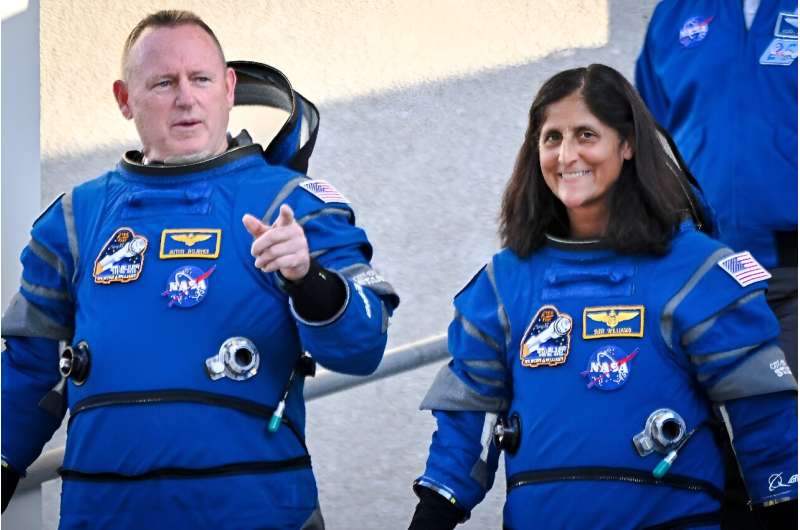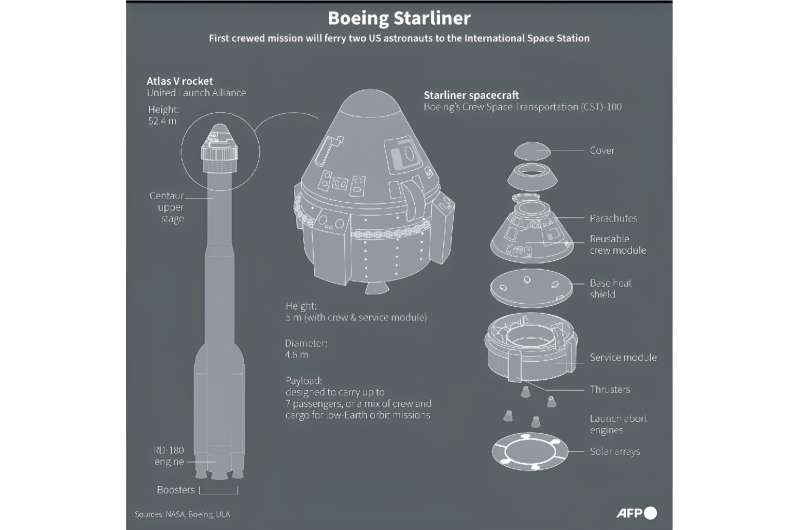by Miguel J. Rodriguez Carrillo with Issam Ahmed in Washington
The first crewed flight of Boeing’s Starliner spaceship was dramatically called off just two hours before launch after a new safety issue was identified, officials said Monday, pushing back a high-stakes test mission to the International Space Station.
Astronauts Butch Wilmore and Suni Williams were strapped into their seats preparing for liftoff when the call for a “scrub” came because engineers noticed audible buzzing from a liquid oxygen relief valve on the Atlas V rocket meant to propel the capsule into orbit.
In a late-night press conference, Tory Bruno, president and CEO of United Launch Alliance (ULA) that built the rocket, told reporters the unusual vibrations were a sign the valve parts might be wearing down to the point of failure, but insisted “the crew was never in any danger.”
Engineers will now work through the night to determine the degree of deterioration and decide whether to re-fit the same part on the launchpad, or wheel the rocket back to its assembly building to install a new valve, he added.
ULA, a Boeing-Lockheed Martin joint venture, later said the next launch attempt would be Friday at the earliest.
“The team needs additional time to complete a full assessment, so we are targeting the next launch attempt no earlier than Friday, May 10,” ULA said on social media platform X.
The mission has already faced years of delays and comes at a challenging time for Boeing, as a safety crisis engulfs the century-old manufacturer’s commercial aviation division.
NASA is banking on a successful test for Starliner so it can certify a second commercial vehicle to carry crews to the ISS.
Elon Musk’s SpaceX achieved the feat with its Dragon capsule in 2020, ending a nearly decade-long dependence on Russian rockets following the end of the Space Shuttle program.

History of setbacks
Following the decision to abort the launch, the astronauts, clad in blue spacesuits, were helped out of Starliner then boarded a van back to their quarters.
Wilmore and Williams, both Navy-trained pilots and space program veterans, have each been to the ISS twice, traveling once on a shuttle and then aboard a Russian Soyuz vessel.
Their new mission will see them put Starliner through its paces, piloting the craft manually to test its capabilities.
The gumdrop-shaped capsule with a cabin about as roomy as an SUV is set to rendezvous with the ISS for a weeklong stay, before returning to Earth for a parachute-assisted landing in the western United States.
A successful mission would help dispel the bitter taste left by numerous setbacks in the Starliner program.
In 2019, during a first uncrewed test flight, software defects meant the capsule was not placed on the right trajectory and returned without reaching the ISS. “Ground intervention prevented loss of vehicle,” said NASA in the aftermath, chiding Boeing for inadequate safety checks.
Then in 2021, with the rocket on the launchpad for a new flight, blocked valves forced another postponement.
The vessel finally reached the ISS in May 2022 in a non-crewed launch. But other problems that came to light—including weak parachutes and flammable tape in the cabin that needed to be removed—caused further delays to the crewed test flight, necessary for the capsule to be certified for NASA use on regular ISS missions.

Exclusive club
SpaceX’s Dragon capsule joined that exclusive club four years ago, following the Mercury, Gemini, Apollo and Space Shuttle programs.
In 2014, the agency awarded fixed-price contracts of $4.2 billion to Boeing and $2.6 billion to SpaceX to develop the capsules under its Commercial Crew Program.
This marked a shift in NASA’s approach from owning space flight hardware to instead paying private partners for their services as the primary customer.
Once Starliner is fully operational, NASA hopes to alternate between SpaceX and Boeing vessels to taxi humans to the ISS.
Even though the orbital lab is due to be mothballed in 2030, both Starliner and Dragon could be used for future private space stations that several companies are developing.
© 2024 AFP
Citation:
Boeing Starliner crewed mission postponed shortly before launch (2024, May 7)
retrieved 7 May 2024
from
This document is subject to copyright. Apart from any fair dealing for the purpose of private study or research, no
part may be reproduced without the written permission. The content is provided for information purposes only.